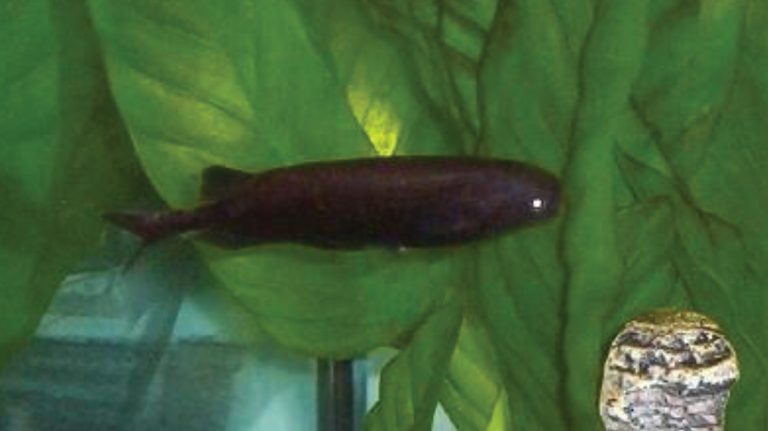Are you looking for a way to spruce up your aquarium? Introducing 21 extra tall aquarium plants for your aquarium to transform your tank into a vibrant and lush oasis! These plants are aesthetically pleasing and provide a natural source of food and oxygen for the fish in your tank. Whether experienced with aquariums or just getting started, this guide will help you find the right type of extra-tall plants for your specific needs.
Amazon Sword

| Parameters | Values |
| Scientific Name | Echinodorus grisebachii |
| Family | Alismataceae |
| Maximum Size | 16 Inches |
| Care Level | Easy |
| Color | Dark green |
| Cost | Tiny healthy Amazon sword plant is about $3-4 |
| Temperature | 60.8-82.40 F |
| pH | 6.5-7.5 pH |
| General Hardness | 8-150 dH |
| Light level | Moderate |
The Amazon Sword is one of the most popular tall aquarium plants. Its lush green leaves and tall structure make this plant a great addition to any home aquarium. It’s easy to care for, providing low-maintenance beauty and color in various sizes.
This aquatic plant can be found in many pet stores and online retailers, making it an accessible choice for aquarists looking to add height and dimension to their tank. The Amazon sword grows quickly when given adequate lighting, fertilizer, and water conditions.
Its broad leaves reach about 20 inches tall, making it stand out in tanks with lower levels of background foliage. Its thick leaves also provide hiding spots for smaller fish or invertebrates that prefer more coverage from predators or light exposure.
Propagation of the Amazon Sword
Propagating Amazon sword plants is easy and can help create an even more lush appearance in your aquarium. The best way to propagate these plants is by cutting off the runners forming along the substrate-level stem.
These runners will quickly take root if they come into contact with gravel or nutrient-rich soil. Once rooted, the new plant will grow independently from the mother plant while providing an attractive addition to your tank’s decor.
Corkscrew Vallisneria

| Parameters | Values |
| Scientific Name | Vallisneria torta |
| Family | Tapegrass |
| Care Level | Easy |
| Maximum Size | 20 Inches |
| Color | Grass green |
| Temperature | 68-82.5 °F |
| pH | 5-8 pH |
| General Hardness | Hard water |
| Light level | Moderate to High |
| Cost | $ 3-5 |
Corkscrew Vallisneria (Vallisneria torta) is an exotic tall aquarium plant that belongs to the tape grass family. Native to Southeast Asia, this aquatic plant is recognizable by its long, narrow leaves and distinct corkscrew-like shape. It adds a unique beauty to any planted aquarium as it can grow up to two feet in height, depending on water conditions.
This species of Vallisneria has become a highly sought-after aquarium plant due to its low maintenance requirements and ability to thrive in brackish and freshwater environments. It grows quickly in the right environment and prefers moderate light levels with some nutrient-rich substrate.
This hardy aquatic plant is also very resilient against common diseases and parasites, making it an ideal choice for beginners looking for an interesting centerpiece addition to their tank.
Propagation of Corkscrew Vallisneria
To propagate Corkscrew Vallisneria, you will need mature pieces of the existing plants with healthy roots attached. Once you have them, cut them into 4 to 5-inch sections from the main stem or use scissors to snip off side shoots on existing branches for propagation.
Jungle Vallisneria
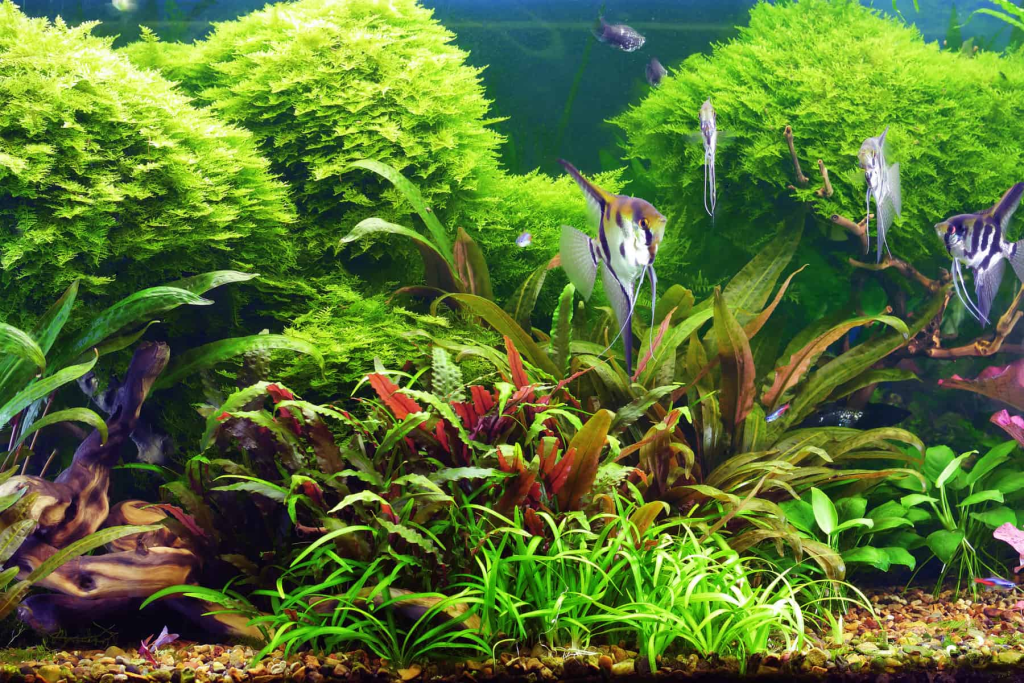
| Parameters | Values |
| Scientific Name | Vallisneria Americana |
| Family | Hydrocharitaceae |
| Color | Green |
| Care Level | Intermediate |
| Maximum Size | 6 feets or 2 meters |
| Temperature | 65° – 85° F |
| pH | 6.8 – 8.0 |
| General Hardness | Moderately Hard to Very Hard |
| Light level | Medium |
| Cost | $7-8 |
Jungle Vallisneria is a tall aquarium plant native to the shallows of tropical and subtropical rivers, lakes, and ponds. It’s an ideal choice for aquarists looking for ways to enhance their tank with taller plants. This species of Vallisneria can grow up to three feet in height under the right conditions, making it one of the tallest aquarium plants available.
When fully grown, Jungle Vallisneria has long green leaves that emerge from a short stem and wave gently in the water current. In tanks with plenty of light and nutrients, these lush leaves will form dense underwater forests that provide shelter and food for fish. Many hobbyists also appreciate its aesthetics, as it adds an extra layer of depth to any aquarium setup.
Propagation of the Jungle Vallisneria
The best way to propagate this tall aquarium plant is by splitting the shoots from the main rhizome. Using scissors or shears, cut the projections at the base of each leaf node and replant them in either the same tank or another one. For optimal growth, ensure each shoot has three or more leaves attached.
Ludwigia Repens
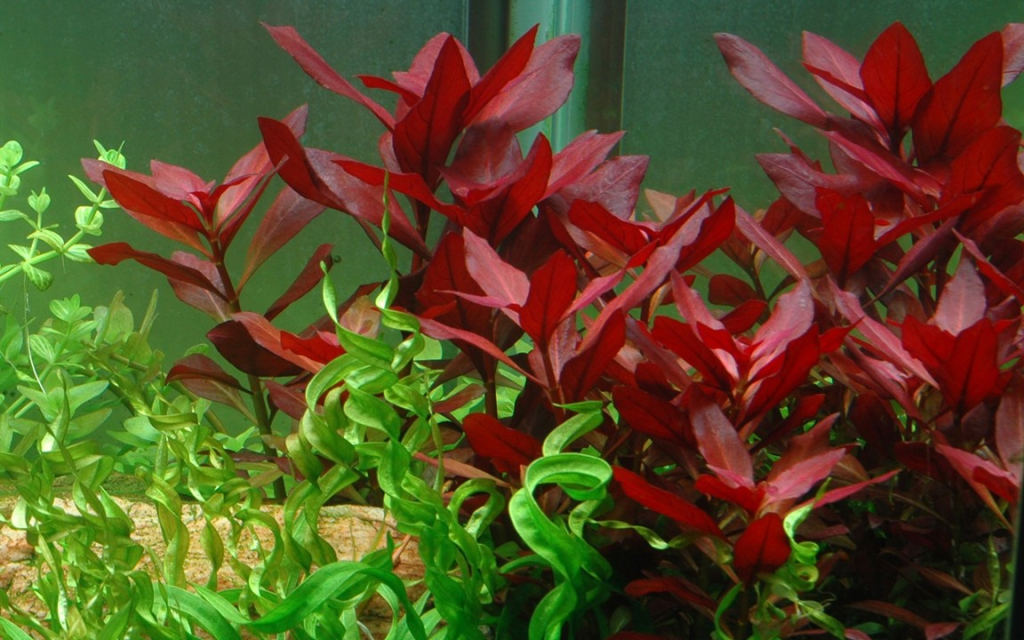
| Parameters | Values |
| Scientific Name | Ludwigia repens |
| Family | Onagraceae |
| Color | Leafe color range- dark green to brownish red or deep red |
| Care Level | Easy |
| Maximum Size | 7-19 inches |
| Temperature | 60- 860F |
| pH | 5 – 8 pH |
| General Hardness | Very soft to hard level |
| Light level | Low to very high |
| Cost | $4-7 |
Ludwigia Repens is one of the most popular tall aquarium plants in the aquatic hobby. It has a unique scientific name, Ludwigia repens, and can reach maximum sizes of 7-19 inches. This plant is easy to care for and requires moderate lighting to thrive in an aquarium tank. This plant tolerates various water parameters, making it ideal for novice aquarists who are just getting started with planted tanks. Ludwigia Repens adds a lot of beauty to an aquarium tank and provides cover for fish looking for places to hide from more aggressive tank mates.
This species also helps oxygenate the water column by absorbing carbon dioxide from the surrounding environment and releasing oxygen molecules back into their surroundings. Ludwigia Repens also helps reduce nitrate concentrations in an aquarium tank by utilizing it as a nutrient source during photosynthesis when light conditions are optimal.
Propagation of Ludwigia Repens
This plant species is also easy to propagate due to its stem-cutting capabilities. After being cut, all that’s needed is some rooting hormone and new substrate material, such as gravel or clay pellets, for the cuttings to take root. Roots typically begin forming within two weeks, and with adequate care, the newly propagated Ludwigia repens should start growing rapidly.
Bacopa Caroliniana

| Parameters | Values |
| Scientific Name | Bacopa Caroliniana |
| Family | Scrophulariaceae |
| Color | Color range – green to yellow to pinkish color. |
| Care Level | Easy |
| Maximum Size | 11+ inches |
| Temperature | 69.8 – 80.6°F |
| pH | 6.8 – 7.2 pH |
| General Hardness | 71.43 – 142.86 PPM |
| Light level | Low |
| Cost | $ 5-8 |
Bacopa Caroliniana, a flowering plant belonging to the family Scrophulariaceae, is known for its vibrant colored foliage and tall stature. This plant can be found growing in many aquariums worldwide due to its ability to thrive in wet environments. Boasting an impressive maximum height of 11 inches, Bacopa Caroliniana offers aquarists an attractive option for those looking for taller aquarium plants.
Hobbyists have widely used this aquatic herb to add some extra vibrancy and color to their tanks. With shades ranging from dark green to deep purple leaves that form on long stems, it’s not hard to see why this plant is becoming increasingly popular amongst aquarists looking for something different.
Propagation of Bacopa Caroliniana
The first step when propagating Bacopa Caroliniana is finding the right substrate for the new growth. This aquatic species prefers a sandy substrate with plenty of organic material mixed in and should be kept moist but never soggy. The next step requires cutting off at least three inches from the top of the parent plant’s stems and replanting them into fresh soil or gravel containers.
Asian Ambulia

| Parameters | Values |
| Scientific Name | Limnophila sessiliflora |
| Family | Plantaginaceae |
| Color | Bright green |
| Care Level | Moderate |
| Maximum Size | 15 Inches |
| Temperature | 59-820 F |
| pH | 5-8 pH |
| General Hardness | 2-210 dKH |
| Light level | Low |
| Cost | $5 |
Asian Ambulia, scientifically known as Limnophila sessiliflora and belonging to the Plantaginaceae family, is one of the most popular tall aquarium plants used in aquascaping. Native to Southeast Asia, it usually grows up to 15 inches tall and has bright green leaves that are slender and pointed with a thick stem. This beautiful plant is an excellent oxygenator in fish tanks and grows well when submerged. Its deep green foliage contrasts beautifully with its small white flowers, making it attractive for any aquarium setting.
For aquarists looking for tall plants that are easy to maintain, Asian Ambulia can be an ideal option due to its fast growth rate, even under low light conditions.
Propagation of Asia Ambuli
One method of propagating this species involves taking clippings from existing healthy plants in your tank and replanting them in a substrate such as gravel or sand. You can then cover the clippings with the additional substrate to help secure them.
After planting, you should use fertilizer tablets placed near the base of each plant to ensure adequate nutrients are available for growth. Once planted, the clippings will slowly develop roots and eventually begin to grow toward the surface of the tank’s water line.
Lace Plant
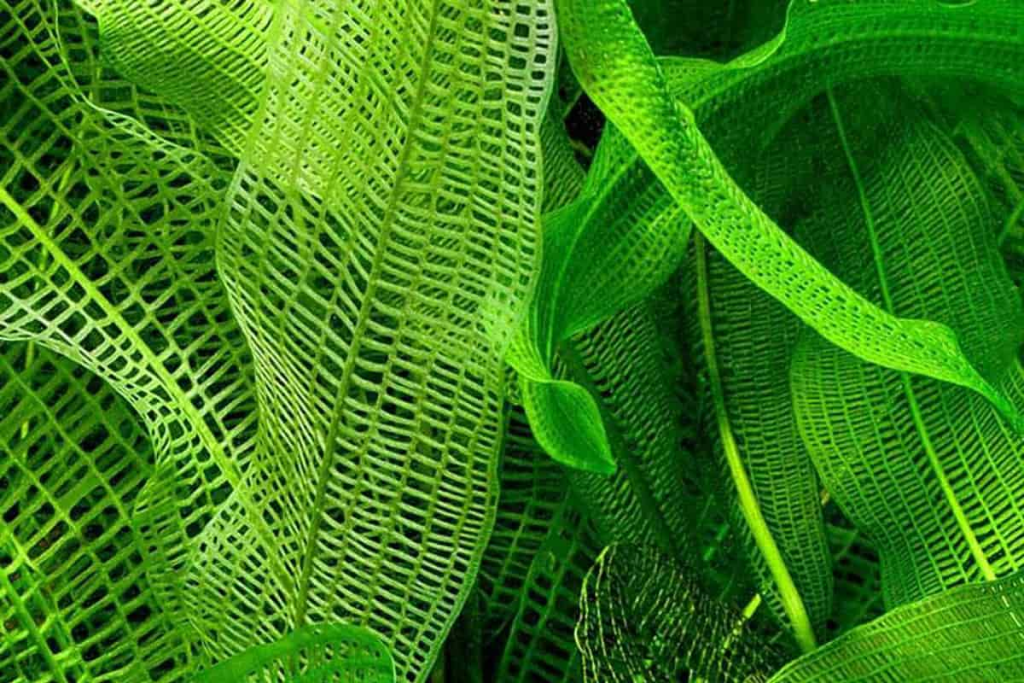
| Parameters | Values |
| Scientific Name | Aponogeton madagscariensis |
| Family | Aponogetonaceae |
| Color | Light green |
| Care Level | Moderate |
| Maximum Size | 20+ Inches |
| Temperature | 72-820 F |
| pH | 6-7 pH |
| General Hardness | KH 3-6 |
| Light level | Moderate to high |
| Cost | $4.99-9.29 |
The Lace Plant, scientific name Aponogeton madagscariensis and family Aponogetonaceae, is an ideal tall aquarium plant. Growing up to 20 inches in height, this magnificent aquatic plant can add a unique beauty to any home or office fish tank. The Lace Plant has delicate leaves that are often compared to lace fabric due to its intricate pattern and texture.
Its long stem provides maximum coverage in the aquarium while creating a beautiful background for other plants or decorations. The Lace Plant’s vibrant green color creates a gentle contrast with its white-veined foliage and makes it stand out from other aquarium plants of similar size. Additionally, this low-maintenance aquatic plant requires minimal care and provides plenty of oxygen for the fish.
Propagation of Lace Plant
You should take cuttings from the adult parent plant when propagating lace plants. Ensure each cutting has at least two or three healthy leaves attached and no signs of rotting tissue. Place the cuttings in a shallow dish filled with water and leave them there until they begin to root.
Water Wisteria

| Parameters | Values |
| Scientific Name | Hygrophila difformis |
| Family | Acanthaceae |
| Color | Light green |
| Care Level | Easy |
| Maximum Size | 20 Inches |
| Temperature | 70-820 F |
| pH | 6.5-7.5 pH |
| General Hardness | 2-8 KH |
| Light level | Moderate to high |
| Cost | $5 |
Water Wisteria, scientifically known as Hygrophila difformis, is a tall aquarium plant that belongs to the Acanthaceae family. This aquatic plant can reach heights of up to twenty inches in an aquarium and is popular among aquarists due to its lush foliage and vibrant colors. The lush green leaves on Water Wisteria are attractive and help create a natural atmosphere in the tank while providing valuable hiding places for fish.
Water Wisteria grows best when planted in a nutrient-rich substrate and supplied with plenty of bright lighting. It requires regular trimming so its growth doesn’t get out of hand, and it’s important to prune any dead or dying leaves so they don’t harm the health of other plants or fish. This plant should be regularly fertilized with special liquid fertilizer so it can remain healthy and grow up to twenty inches tall!
Propagation of Water Wisteria
Propagating Water Wisteria is very easy and low maintenance compared to other aquarium plants. All it requires is a clean pair of scissors, some fertilizer tablets, and the right water parameters, including pH between 6-7.5 and temperatures ranging from 72-82 degrees Fahrenheit (22-28 Celsius).
Cuttings should be taken from the main stem or lateral branches just below a node leaving 4-6 leaves per cutting before being planted into a substrate at least 10 cm deep.
Rotala Indica
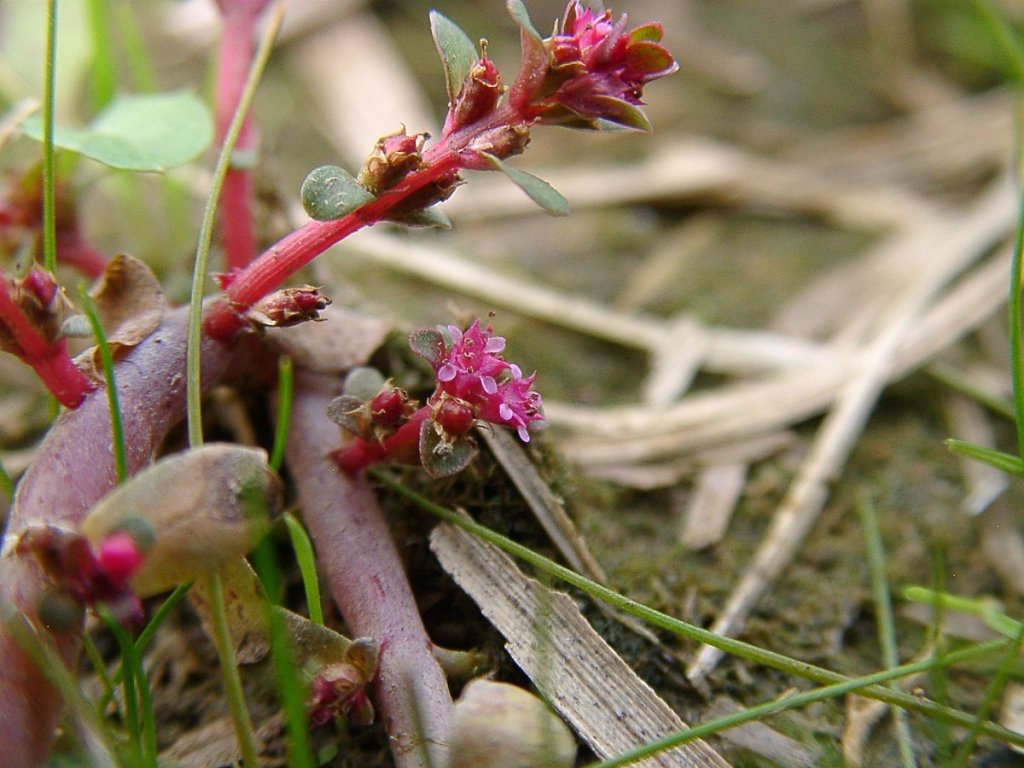
| Parameters | Values |
| Scientific Name | Rotala indica |
| Family | Lythraceae |
| Color | green |
| Care Level | Moderate |
| Maximum Size | 31 Inches |
| Temperature | 72-820 F |
| pH | 6.5-7.5pH |
| General Hardness | KH 3-8 |
| Light level | Moderate to high |
| Cost | $5 |
Rotala Indica, also known as the Tall Aquarium Plant, is an aquatic plant belonging to the Lythraceae family. With its scientific name coming from Latin meaning “float,” this species of Rotala is quite popular among aquarists due to its growth rate and color variations ranging from green to pink. This fast-growing aquarium plant can reach up to 31 inches in height and has many uses in different aquariums.
The thick stems and long leaves of Rotala indica make it ideal for cultivation in gravel or substrate tanks with low light conditions and in tall tanks with medium light intensity. It can be used alone or combined with other plants as a background feature for creating stunning visual effects.
Propagation of Rotala Indica
Propagation involves taking cuttings from existing stems, then planting them in the new substrate or attaching them to driftwood or rocks using cotton thread or fishing line. It’s important to ensure each cutting has at least two nodes, the points along the stem where leaves emerge. Once planted, the cuttings should be kept in an area with high light and moderate water flow to spread quickly throughout your aquarium.
Green Cabomba

| Parameters | Values |
| Scientific Name | Cabomba caroliniana |
| Family | Cabombaceae |
| Color | green |
| Care Level | Moderate |
| Maximum Size | 11 Inches |
| Temperature | 72-820 F |
| pH | 6.8-7.5 pH |
| General Hardness | kH 3-8 |
| Light level | Moderate to high |
| Cost | $6 |
Green Cabomba is one of the most popular tall aquarium plants available. Its scientific name is Cabomba caroliniana, and it belongs to the family Cabombaceae. This plant typically grows up to 11 inches in height and makes an excellent choice for a background plant in any aquarium. It has bright green foliage, delicate leaves, and translucent stems that create a beautiful effect when planted.
Green Cabomba provides many benefits for an aquarium ecosystem, including providing shelter for fish, oxygenating the water, and absorbing pollutants from the water column. Additionally, this robust species can tolerate high temperatures and low light conditions, making it easy to maintain in any tank environment.
With its unique beauty and ease of care, Green Cabomba is an excellent option when selecting tall plants for your aquarium!
Propagation of Green Cabomba
Propagation of Green Cabomba starts with harvesting cuttings from existing plants. Cuttings should be harvested from the stem above where the leaves emerge. The cutting should then be planted in the substrate at a depth of about 3 inches and kept moist until the roots begin to form.
Once well established, it will rapidly grow in aquarium water conditions as long as 2-3 watts per gallon are provided by lighting fixtures or by natural light exposure.
Java Fern

| Parameters | Values |
| Scientific Name | Microsorum pteropus |
| Family | Polypodiaceae |
| Color | Dark green |
| Care Level | Easy |
| Maximum Size | 13.5 Inches |
| Temperature | 68-820 F |
| pH | 6-7.5 pH |
| General Hardness | 60-160 ppm |
| Light level | Low to Moderate |
| Cost | $5-6 |
Java Ferns, scientific name Microsorum Pteropus and family Polypodiaceae, are tall aquarium plants that grow up to 13.5 inches in height. They are considered an excellent choice for a freshwater aquarium due to their hardiness and ability to thrive in low-light conditions. Java ferns prefer cool water temperatures from 73-79°F and moderate pH levels of 6-7.5.
The java fern leaves have a unique texture with a leathery feel reminiscent of the scales of a dragon’s hide! They can be planted into the substrate or attached to rocks or driftwood using cotton thread or fishing line, which will eventually decay and allow them to take root over time.
Propagation of Java Fern
Java ferns grow best when planted on the substrate or tied onto driftwood or rocks with fishing lines. To propagate, start by carefully taking apart the rhizomes of an existing plant. Once divided, each piece can be placed elsewhere in the tank and will slowly begin to develop new leaves as they attach themselves to their new homes beneath the water’s surface.
Anacharis
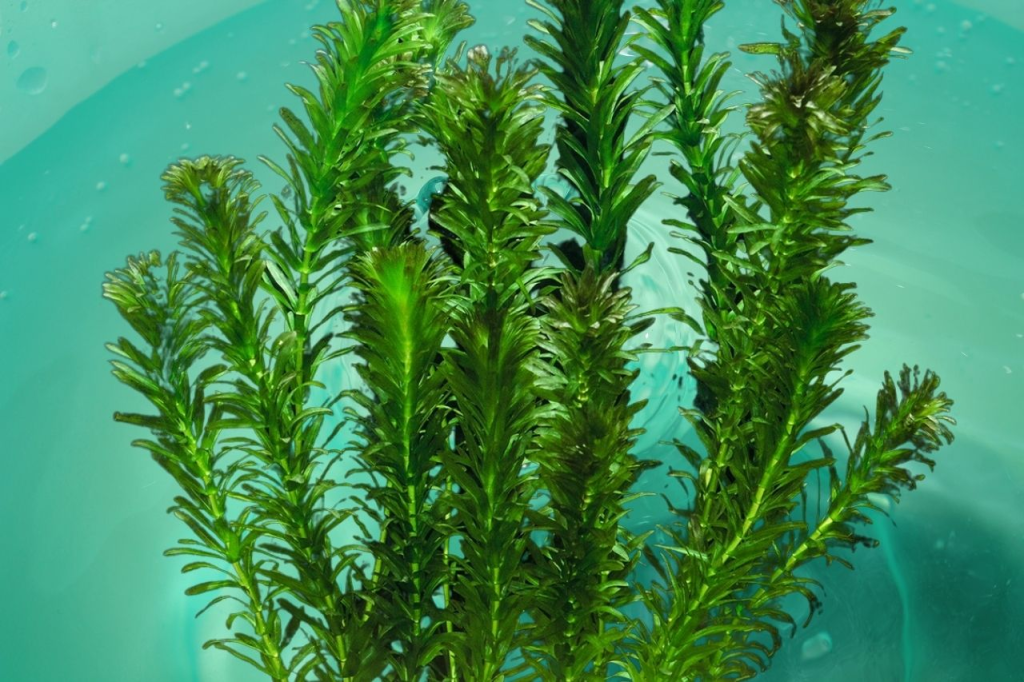
| Parameters | Values |
| Scientific Name | Elodea sp. |
| Family | Hydrocharitaceae |
| Color | green |
| Care Level | Easy |
| Maximum Size | 6 to 8 Inches |
| Temperature | 60-820 F |
| pH | 6.5-7.5 pH |
| General Hardness | kH 3-8 |
| Light level | Moderate |
| Cost | $3-6 |
Anacharis, known by its scientific name Elodea sp., is a tall aquarium plant in the Hydrocharitaceae family. Standing 6 to 8 inches high, this aquatic plant can be found in ponds and lakes worldwide. Anacharis is an ideal choice for aquariums because it can absorb nitrates from the water and provide living space for organisms like fish and shrimp. It also helps to protect against algae growth with its dense foliage. Anacharis looks beautiful in any setup and plays a vital role in improving water quality for your fishy friends.
Aquarists have used anacharis for decades because of its tall stature and lush foliage, which add beauty and life to any aquarium tank.
Propagation of Anacharis
Propagating anacharis couldn’t be easier! All you need are two scissors, a glass or plastic container, and an ample water supply. Start by cutting off the parent plant’s top 3–4 inches of the stem. Be sure each cut contains at least three leaves connected to it – this will help ensure successful propagation.
Water Sprite
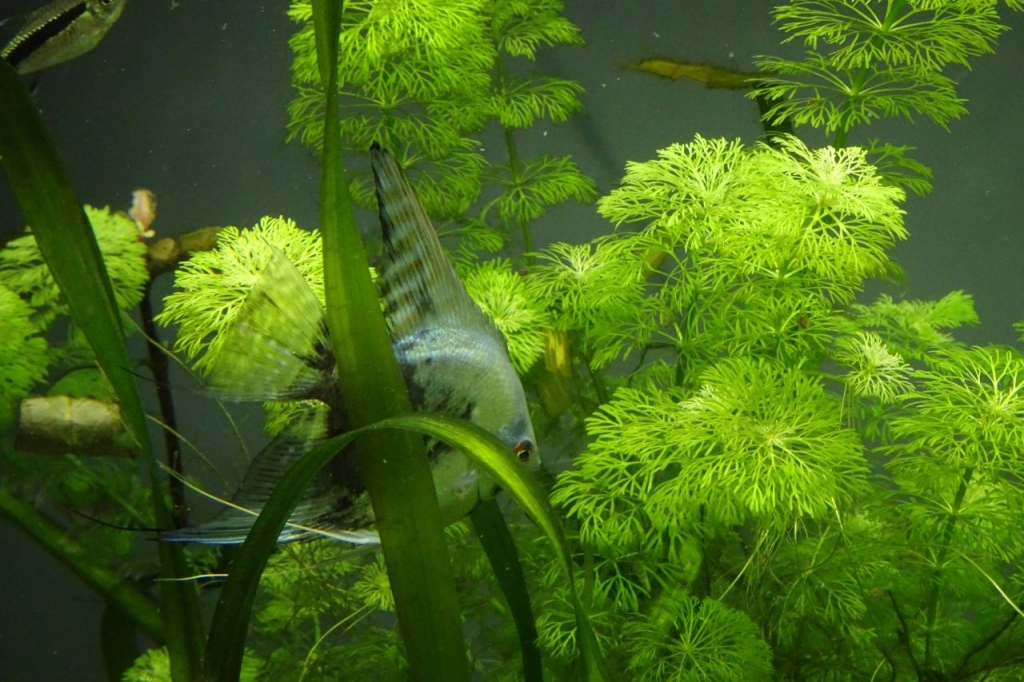
| Parameters | Values |
| Scientific Name | Ceratopteris sp |
| Family | Petridaceae |
| Color | green |
| Care Level | Easy |
| Maximum Size | 13.5 Inches |
| Temperature | 68-820 F |
| pH | 6.5-7.5 pH |
| General Hardness | kH 3-8 |
| Light level | Medium to high |
| Cost | $ 7-8 |
The Water Sprite, scientific name Ceratopteris sp Family Petridaceae, is a popular aquarium plant that adds character and color to any home aquarium. The Water Sprite is native to tropical regions worldwide, including South America and Asia. It grows up to 13.5 inches tall in its natural environment and typically reaches this size in an aquarium if given sufficient space.
This plant prefers water temperatures between 68-86°F with a pH level of 6-7.5, making it an easy addition to most home aquaria. Its vibrant green foliage is often associated with floating plants or those planted directly into the substrate. It can be used for hiding places for fish or shrimp, creating a unique landscape design within the aquarium, or simply adding visual interest to the overall look of your tank setup.
Propagation of Water Sprite
The first step in propagating water sprite is to identify the parent plant’s healthy parts that can be cut off without damaging them. When a runner has healthy-looking leaves and roots attached, it can be separated from the mother plant carefully using sharp scissors. After separation, all severed portions must be immediately placed in their respective tanks since they will not survive out of water for more than a few minutes.
Brazillian Pennywort

| Parameters | Values |
| Scientific Name | Hydrocotyle leucocephala |
| Family | |
| Color | Green leaves with white-ish roots |
| Care Level | Easy |
| Maximum Size | 8 Inches |
| Temperature | 68-820 F |
| pH | 6.5-7.5 pH |
| General Hardness | kH 3-8 |
| Light level | Moderate |
| Cost | $ 7-8 |
Brazillian Pennywort, also known by its scientific name Hydrocotyle leucocephala, is a fast-growing aquatic plant that can reach heights of up to 8 inches. This plant is native to Central and South America and has become an increasingly popular choice among aquarium hobbyists due to its ability to provide shelter and shade for fish. It’s easy to care for, making it the perfect addition to any freshwater tank.
The Brazillian pennywort grows in a rosette shape with bright green leaves radiating out from the center. Its stems are malleable, which allows them to be placed in various areas of the tank without taking up too much space or disrupting other plants or decorations. The leaves also absorb nitrogenous waste from the water, making it a great way for hobbyists to help keep their tanks clean and healthy for their fish.
Propagation of Brazilian Pennywort
When propagating with cuttings, snip off the stem tips of the Brazilian pennywort with scissors or pruning shears. Make sure that each cutting includes two or three leaves so that they can root in the substrate better. Place them in a substrate material such as gravel or sand in an aquarium or pond, and keep them moist but not soggy. They should develop roots within several weeks and begin new growth shortly after.
Green Foxtail

| Parameters | Values |
| Scientific Name | Myriophyllum Pinnatum |
| Family | Halorhagaceae |
| Color | Green |
| Care Level | Easy |
| Maximum Size | 24 Inches |
| Temperature | 72-820 F |
| pH | 6.5-7.5 pH |
| General Hardness | kH 3-8 |
| Light level | Moderate |
| Cost | $4 |
Green foxtail, scientific name Myriophyllum pinnatum family Halorhagaceae, is a perennial aquatic plant that grows up to 24 inches in height. This aquatic plant has an erect stem and lance-shaped leaves arranged in whorls along the stem. The spikelets of this plant are green-brown with three to five flowers each.
The petals of green foxtail are narrow and pointed at the tips. The spikes can reach up to 8 inches long and contain numerous seeds that disperse during the late summer or fall. As it is a submerged aquatic species, it needs plenty of water for its survival; however, it can also tolerate drought conditions.
This plant has been widely used in aquaculture due to its ability to reduce algae growth in tanks and ponds.
Propagation of Green Foxtail
Propagation of green foxtail begins with collecting mature seed heads in autumn just before they disperse their seeds. The harvested seed heads should be dried to promote germination once planted. Seedlings emerge about two weeks after planting and should be transplanted into their permanent location after several more weeks when they are well-established.
If desired, soil amendments like fertilizer or manure may be added to enhance soil fertility before sowing the seeds or transplanting young plants.
Giant Hygro

| Parameters | Values |
| Scientific Name | Hygrophila corymbosa |
| Family | Acanthaceae |
| Color | Dark green to pink |
| Care Level | Easy |
| Maximum Size | 24 Inches |
| Temperature | 72-820 F |
| pH | 6.5-7.5 pH |
| General Hardness | 71.43-321.43 ppm |
| Light level | Medium |
| Cost | $4-5 |
Giant Hygro, scientific name Hygrophila corymbosa, and family Acanthaceae is a rare aquatic plant that has quickly become popular in the aquarium hobby. This unique species grows to an impressive size of 24 inches, and its large leaves help create an eye-catching aesthetic for any tank. Not only is the Giant Hygro aesthetically pleasing, but it also plays a key role in providing oxygen for other tank inhabitants.
This Giant Hygro is known for being quite hardy and easy to maintain, making it ideal for both beginner and experienced aquarists. Its fast growth rate means it will rapidly fill space within the aquarium once introduced. Like most aquatic plants, this species does best when planted directly into substrate rather than floating freely in the water column.
Propagation of Giant Hygro
The most common way to propagate giant hygro is by dividing the existing clumps. This is done by gently removing the entire cluster from the substrate and cutting it into smaller bunches with a sharp knife or scissors. Each group should have several healthy leaves attached along with some roots to quickly re-establish themselves in their new home.
Aponogeton Crispus
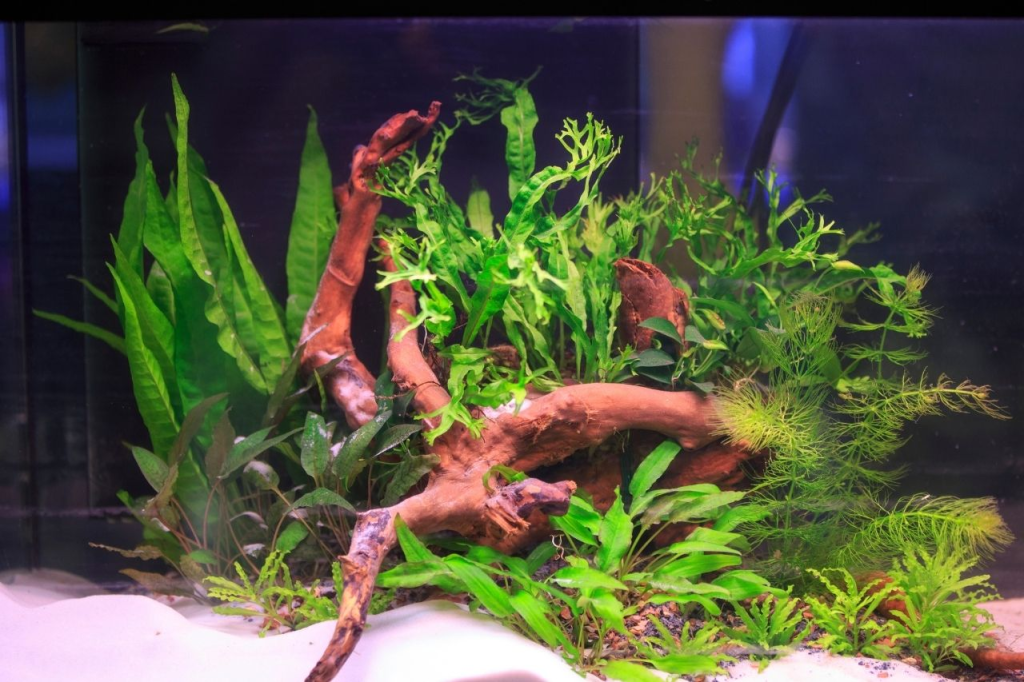
| Parameters | Values |
| Scientific Name | Aponogeton Crispus |
| Family | Aponogetonaceae |
| Color | Light green and red color leaves |
| Care Level | Easy |
| Maximum Size | 9-10 Inches |
| Temperature | 64-860 F |
| pH | Below 7.5 pH |
| General Hardness | dH |
| Light level | Moderate |
| Cost | $8-9 |
Aponogeton Crispus (scientific name Aponogeton Crispus, family Aponogetonaceae) is a popular aquarium plant used in aquascaping for many years. This aquatic plant can grow up to 9-10 inches and is easily recognizable by its unique long, blade-like leaves protruding from the bulbous base. Its distinctive fan shape and olive-green color add a beautiful touch to any aquarium setting.
The hardy nature of this species makes it an ideal choice for beginner aquarists or those looking to create a unique underwater landscape. The adventitious roots make Aponogeton Crispus easy to propagate, and the bulbs can be easily divided into multiple plants when replanting.
Propagation of Aponogeton Crispus
Propagation of Aponogeton Crispus is relatively easy and can be done by division or seed propagation. To propagate by division, the plant needs to be dug up from the substrate and cut into several pieces, with each part containing at least one root and some leaves. Each article should then be replanted in the desired location.
Cryptocoryne wendtii
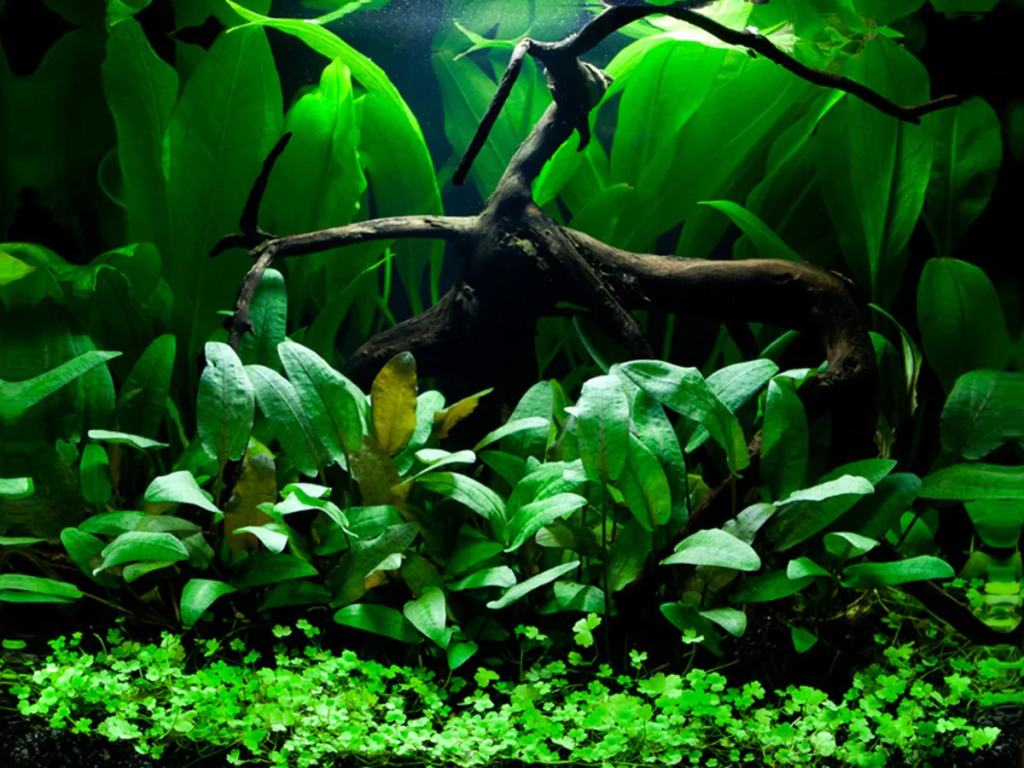
| Parameters | Values |
| Scientific Name | Cryptocoryne wendtii |
| Family | Araceae |
| Color | Red, Brown and Green |
| Care Level | Easy |
| Maximum Size | 6 Inches |
| Temperature | 72-820 F |
| pH | 6-8 pH |
| General Hardness | KH 3-8 |
| Light level | Low |
| Cost | $8-9 |
Cryptocoryne wendtii is a species of aquatic plant from the Araceae family. It is native to Sri Lanka and India and has been successfully cultivated in aquariums for many years. Cryptocoryne wendtii is a slow-growing species that can reach up to 6 inches in height. Its leaves are typically green with brown markings along the edges and have a unique ‘finger-like’ shape.
This species prefers an acidic environment with moderate lighting, clean water, and adequate fertilizers for proper growth. It is also known to be quite hardy and tolerant of environmental changes such as pH fluctuation or temperature extremes. The best way to cultivate this plant is by planting it directly into the substrate or attaching it to driftwood or rocks using a fishing line or cotton thread.
Propagation of Cryptocoryne wendtii
The first step in propagating Cryptocoryne wendtii is identifying healthy plants with strong root systems. Once you’ve selected your plants, separate them by gently pulling the roots apart without ripping or breaking off any leaves.
Hornwort

| Parameters | Values |
| Scientific Name | Anthocerotophyta sp |
| Family | Ceratophyllaceae |
| Color | Dark green |
| Care Level | Easy |
| Maximum Size | 10 foot |
| Temperature | 59-860 F |
| pH | 6-7.5 pH |
| General Hardness | 5-15dGH |
| Light level | Medium |
| Cost | $4-5 |
Hornwort, scientific name Anthocerotophyta sp Family Ceratophyllaceae, is a plant species that can reach up to 10 feet in height. This aquatic plant is generally found near the surface of freshwater ponds or streams and typically forms dense mats on the water’s bed. Hornwort has one of the most recognizable leaf structures among all plants; its leaves are wide and curved with a distinct horn-like shape.
This fascinating plant species also features a unique reproductive system. It reproduces through spores produced in sporangia on the underside of their leaflets instead of flowers like other plants. Moreover, hornwort can be easily propagated by simply cutting off stem pieces and replanting them in another body of water; it grows quickly under optimal conditions and is surprisingly tolerant to drought periods and short periods submerged underwater.
Propagation of Hornwort
The plant’s propagation is relatively easy and involves both sexual and asexual reproduction.
Sexual propagation can occur through pollination by wind or insects, with the resulting seedlings ready to be transplanted after 4-6 weeks. Asexual propagation is much faster than sexual propagation; however, it has certain drawbacks.
Italian Vallisneria
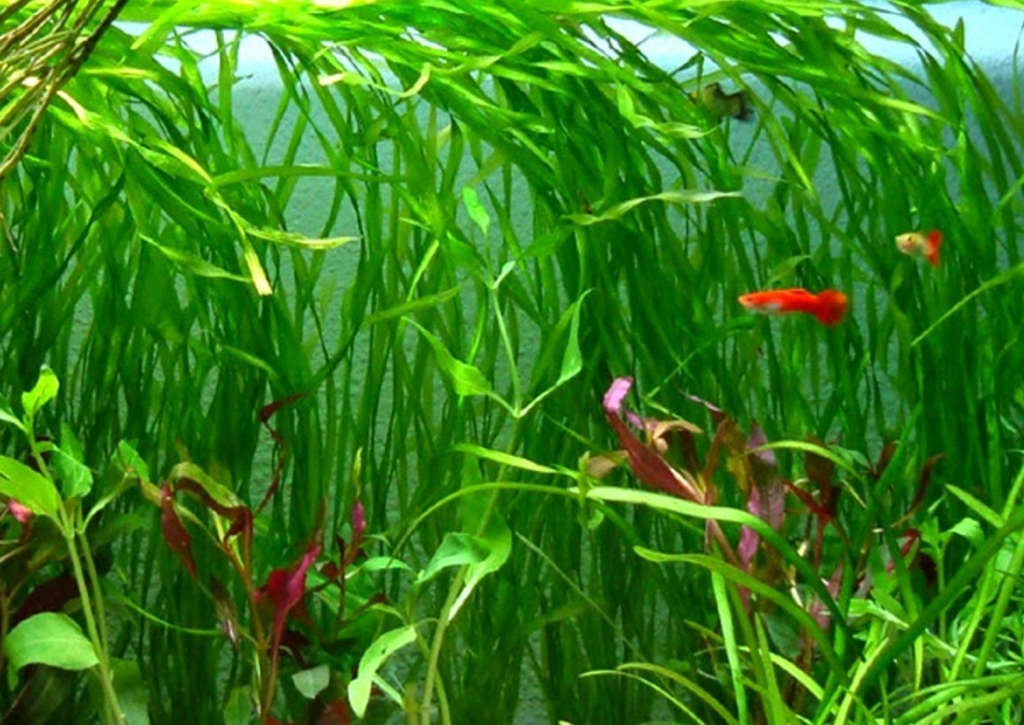
| Parameters | Values |
| Scientific Name | Vallisneria spiralis |
| Family | Hydrocharitaceae |
| Color | green |
| Care Level | Easy |
| Maximum Size | 11.81-21.65 Inches |
| Temperature | 72-800 F |
| pH | 6-7.5 pH |
| General Hardness | 4-180 N |
| Light level | Moderate |
| Cost | $2-3 |
Italian Vallisneria, scientifically known as Vallisneria spiralis, is an aquatic plant species in the Hydrocharitaceae family. This species originates from the Mediterranean but is widely cultivated around the world. It is an easy-to-keep freshwater aquarium plant due to its hardiness and low light requirements.
Italian Vallisneria has thin leaves with a unique spiral pattern which gives it a decorative appearance in tanks. Water temperature, nutrient availability, and other environmental factors can modify its growth rate. Under optimal conditions, the height of this species can reach 11.81-21.65 inches tall, making it an excellent choice for larger aquariums or ponds where it can provide shelter for fish, shrimp, and other aquatic life forms.
Propagation of Italian Vallisneria
Propagation is simple as each section can be planted separately and will quickly grow new leaves once anchored into the substrate.
Moneywort

| Parameters | Values |
| Scientific Name | Bacopa monnieri |
| Family | Scropulariacase |
| Color | Bright green |
| Care Level | Moderate |
| Maximum Size | 12+ Inches |
| Temperature | 72-800 F |
| pH | 6-7.5 pH |
| General Hardness | KH 3-8 |
| Light level | Moderate to high |
| Cost | $3-4 |
Moneywort, scientific name Bacopa monnieri, family Scropulariaceae, is a creeping perennial herbaceous plant that grows up to 12 inches tall. It is native to the wetlands and marshy areas of India, Nepal, and Sri Lanka but has also been introduced to other parts of the world. Moneywort can be found in slow-moving water, and it spreads very quickly by rooting along its stems, reaching lengths of up to 8 feet. The moneywort plant produces white flowers with five petals during late summer and early fall, and its leaves are small, roundish in shape, with fine hairs on them.
Moneywort has long been used medicinally as an adaptogen for improving mental performance and reducing stress levels.
Propagation of Moneywort
Propagation of this low-maintenance plant is easy and rewarding due to its quick growth rate.
Cuttings are the best way to propagate moneywort from an existing, mature plant. Cuttings should be taken in late spring or early summer when the plants are actively growing. They should be 4-6 inches long with two sets of leaves at the top for rooting success.
How to Maintain Tall Aquarium Plants
Proper lighting, temperature, pH, substrate, and nutrient levels must all be maintained to ensure that your tall aquarium plants stay healthy and vibrant.
Lighting is one of the most important elements for keeping tall aquarium plants alive. Depending on the type of plant you have chosen for your tank, you should aim to provide 8-12 hours of light per day with a combination of both spectral bands: blue and red LEDs. The temperature and pH level of your aquarium also play an important role in maintaining the health of your aquarium plants; both should remain between 74°F – 81°F with a neutral pH value of around 7.0 – 7.4.
How to Anchor Tall Aquarium Plants in the Tank
To anchor tall aquarium plants, start by selecting an appropriate substrate, like gravel or sand, that will support the roots of the plants. To secure the plant, use a material such as weights or rocks to hold it down at its base. It’s important to ensure that the objects used are appropriate for aquariums—avoid any items that could break down easily or harm your fish if ingested. Once secured, use tweezers or a net to carefully spread out the plant’s roots and ensure they are firmly planted without damaging them.
Read More:


